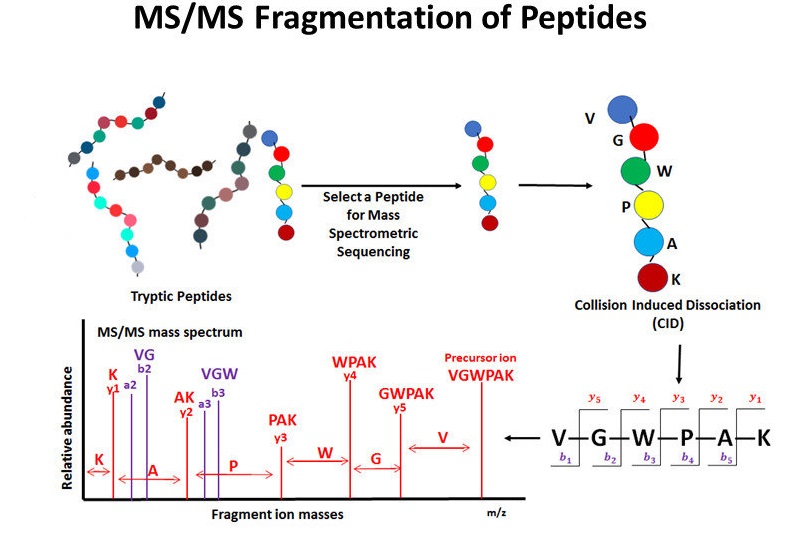Peptide Amino Acid Composition Analysis Service
Peptide amino acid composition analysis is an analytical technique used to determine the types and contents of various amino acids in peptides. This analysis is typically based on high-performance liquid chromatography (HPLC) or liquid chromatography–mass spectrometry (LC-MS). By separating, detecting, and quantifying amino acids after peptide hydrolysis, the method accurately evaluates the distribution of different amino acids in the sample. This approach offers high sensitivity and excellent reproducibility, making it suitable for both scientific research and industrial applications across multiple fields.
Peptide amino acid composition analysis service is widely applied in research areas such as peptide drug development, food science, structural biology, biomaterial evaluation, and protein modification verification. It is particularly important for quality assessment of peptide drugs, detection of mixed peptides, and analysis of amino acid deletion or substitution. The service provides foundational data to support subsequent sequence analysis, structure prediction, or functional validation.

Dupree, E J. et al. Proteomes, 2020.
Figure 1. Correspondence between the Peptide’s Amino Acid Sequence and the Fragment Ion Peaks that Are Produced in MS/MS.
Services at MtoZ Biolabs
Based on high-performance liquid chromatography (HPLC) and liquid chromatography–mass spectrometry (LC-MS) platforms, MtoZ Biolabs offers the peptide amino acid composition analysis service which focuses on the accurate quantitative analysis of amino acid types and their contents in peptide samples. This service is applicable to natural peptides, synthetic peptides, and protein hydrolysates, providing a comprehensive amino acid composition profile that includes both standard and certain modified amino acids. Clients will receive high-resolution quantitative data reports to support peptide quality assessment, structural analysis, or foundational modeling for functional studies.
Analysis Workflow
1. Sample Pretreatment
The peptide sample to be tested is dissolved and purified to remove interfering substances, ensuring analytical accuracy.
2. Hydrolysis
The peptide sample is hydrolyzed under specific conditions to fully break it down into free amino acids.
3. Derivatization Reaction (Optional)
Chemical reagents are used to derivatize the amino acids in the hydrolysate to enhance detection sensitivity and chromatographic separation.
4. Chromatographic/Mass Spectrometric Detection
HPLC or LC-MS is used to separate and quantitatively detect the derivatized amino acids, obtaining the molar ratio data of each amino acid.
5. Data Analysis and Result Reporting
The detection results are quantitatively calculated to generate an amino acid composition profile and a complete data report for structural evaluation or further research use.
Sample Submission Suggestions
1. Sample Types
Various peptide sample types are supported, including synthetic peptides, peptides of natural origin, and protein hydrolysates.
2. Sample Transportation
Samples should be kept frozen at low temperatures (−20°C or −80°C). It is recommended to ship with dry ice to ensure sample stability and avoid repeated freeze-thaw cycles.
3. Additional Notes
Please indicate the sample source, treatment details (e.g., presence of modifications), and known sequence information (if available) to optimize the subsequent analytical process and improve data quality.
Service Advantages
1. High-Sensitivity Detection
Utilizing high-performance liquid chromatography (HPLC) and high-resolution mass spectrometry platforms, this service enables amino acid composition analysis of peptide samples at the nanogram level, suitable for trace sample studies.
2. One-Time-Charge
Our pricing is transparent, no hidden fees or additional costs.
3. Data Visualization Output
Provides detailed quantitative data and composition ratio charts of amino acids, facilitating subsequent functional annotation, sequence alignment, or structural inference in research analysis.
4. Customized Service
Analytical strategies are flexibly adjusted based on sample type, research objectives, and analytical needs to improve efficiency and data applicability.
Applications
1. Protein Structure and Function Research
By analyzing the amino acid composition of peptides, researchers can identify functional regions of proteins and promote in-depth understanding of structure–function relationships.
2. Food and Nutritional Component Evaluation
Peptide amino acid composition analysis service can be used to detect protein hydrolysates in food samples, assess their amino acid content and ratio, and analyze their nutritional structure and functional characteristics.
3. Post-Translational Modification Identification Support
Analyzing the composition of specific peptide segments can help infer the amino acid makeup of modified regions and support preliminary identification of modifications such as phosphorylation and glycosylation.
4. Biological Sample Quality Control
Peptide amino acid composition analysis service serves as an important tool to evaluate the purity and consistency of synthetic or natural peptide samples, thereby enhancing the reliability of subsequent omics research.
Deliverables
1. Comprehensive Experimental Details
2. Materials, Instruments, and Methods
3. Data Analysis, Preprocessing, and Estimation
4. Bioinformatics Analysis
5. Raw Data Files
How to order?







